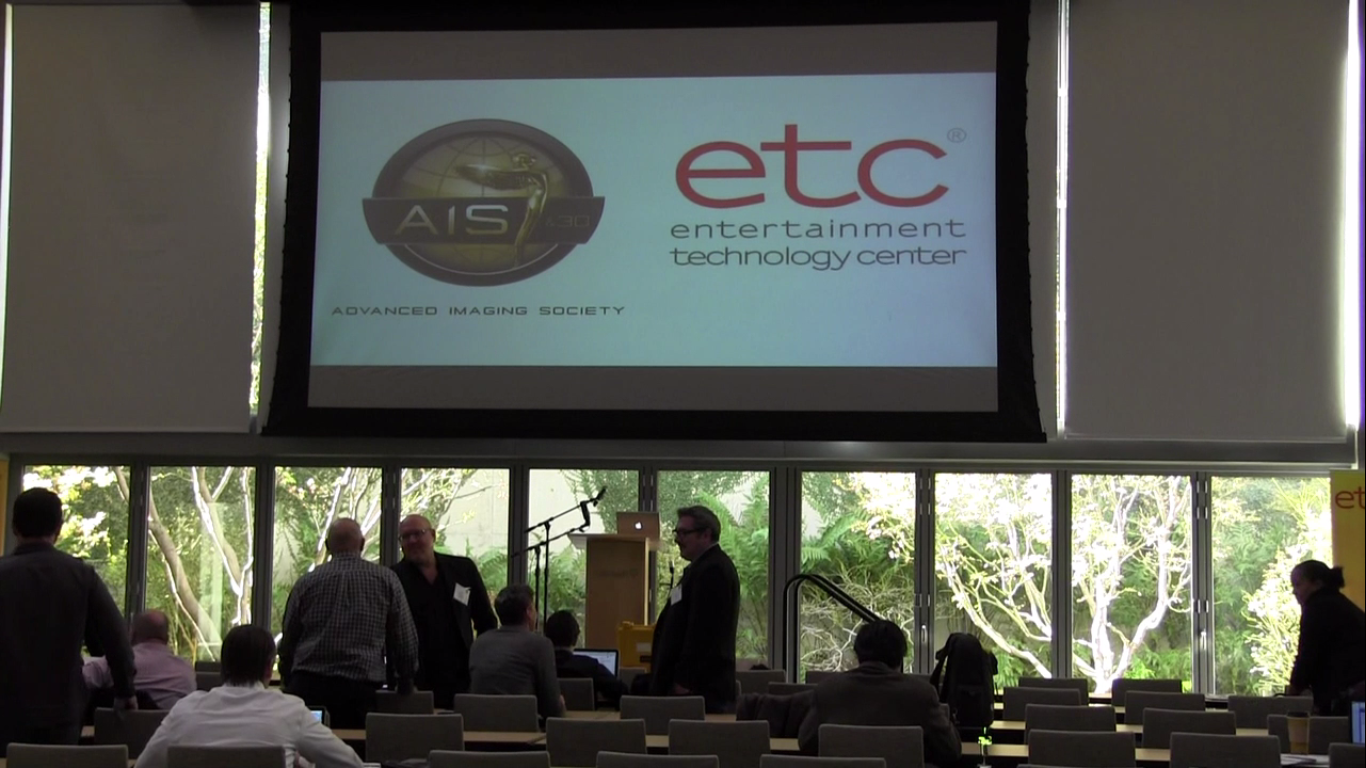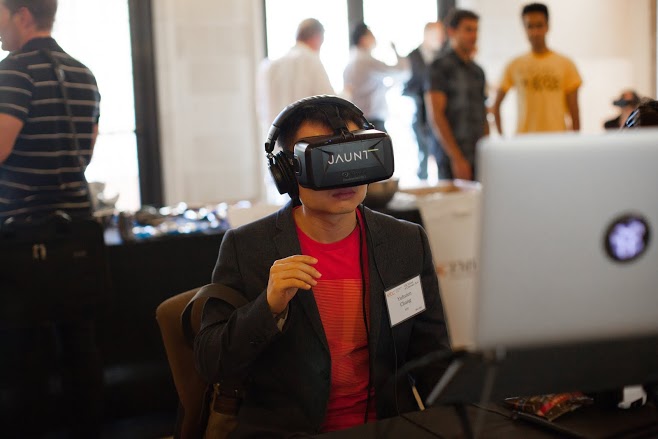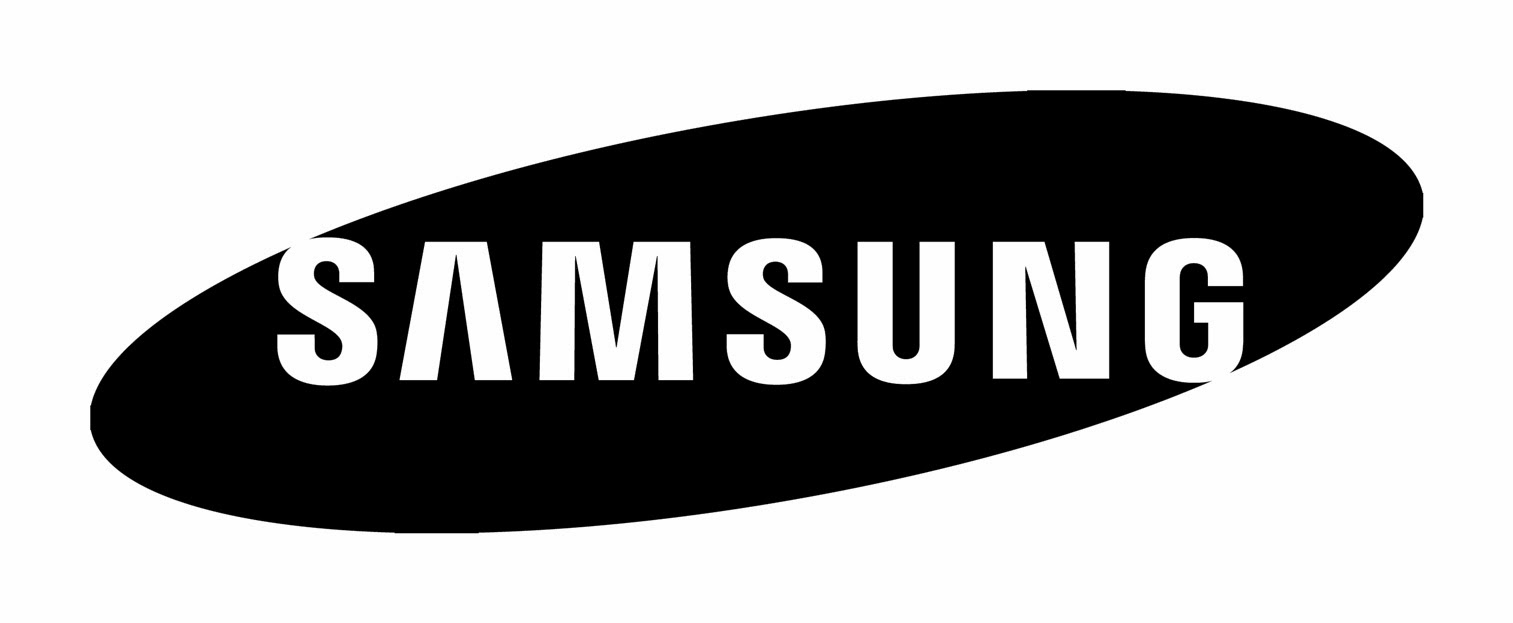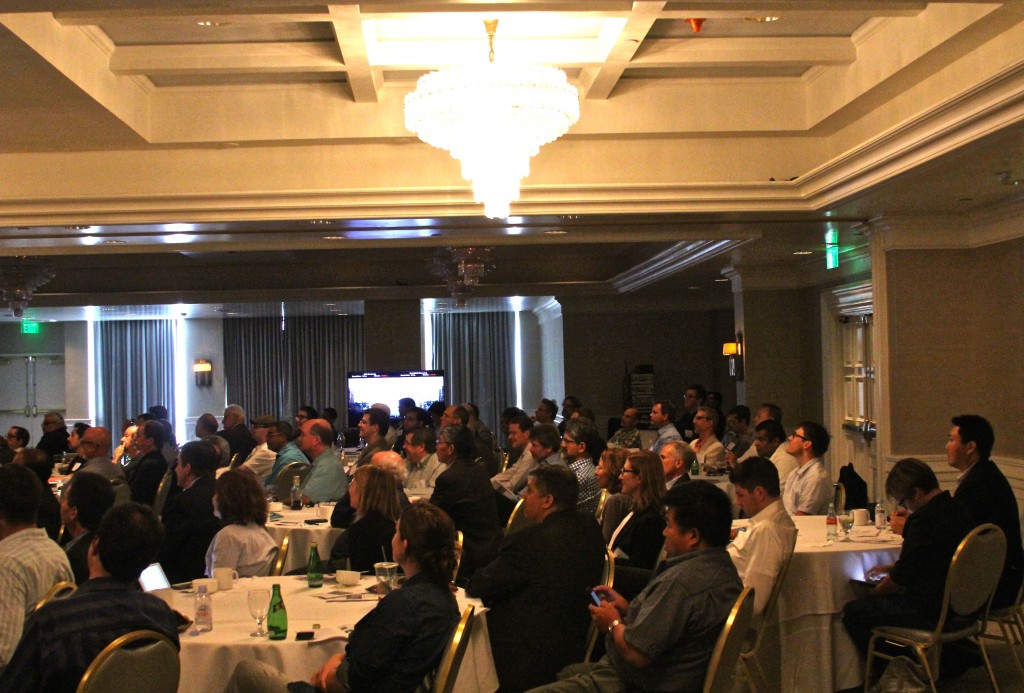Can Machine Intelligence Solve Entertainment’s Data Challenges?
What are the latest developments in visual and sound recognition, natural language processing, machine learning and artificial intelligence and how are entertainment, finance, retail and insurance integrating these tools into their services? Do entertainment datasets, pipelines and workflows present a one-of-a-kind challenge or do other sectors share similar pain points and bottlenecks? Are there ways that content owners, distributors, service providers, and technology companies can collaborate to jumpstart the application of signal analysis and neural networks to their mutual benefit? Attendees will hear concrete and practical use cases from leaders in the field such as Sentient, Amazon, Clarafai, IBM and Rage and see machine intelligence’s potential to plus production and archiving efficiencies, leverage libraries and grow profits.
Registration:
By invitation only.
When: Thursday, March 23, 2017.
Sponsors:
| Hosting Sponsor | Participating Sponsor |
|---|---|
 |
 |
Gallery:
Previous Events
Rise of the Machine: A New Age In Metadata
Can 21st Century data science help solve some of the intractable metadata challenges faced by production, post and archiving? Find out at this interactive forum examining innovations in upstream metadata capture and utilization and the potential for change through data identification, machine learning and AI combined with indelible and unstructured metadata. Presentations, case studies and panels about current and emerging filmmaker solutions; Hollywood and Dublin Core; audio and video content recognition; deep learning; extracting and managing unstructured production metadata; leveraging descriptive metadata for greater ROI; and more.
Target Audience:
Studio, network and OTT executives, production and postproduction leads, technologists and archivists; producers and below-the-line workflow experts; executives and technologists at hardware, software and service companies working in production technology, data capture, recognition and optimization, and asset management.
Registration:
By invitation only. Audience makeup will be calibrated to support a thorough, balanced and open dialogue. Safe harbor—there will be no media coverage.
When: Wednesday, November 2, 1:00 PM – 5:30 PM with a reception.
Sponsors:
| Hosting Sponsors | Supporting Sponsors |
|---|---|
 |
 |
 |
Rethinking Digital Archiving and StorageAs the latest in its ongoing Digital Town Square series, the Entertainment Technology Center at USC held a symposium on “Rethinking Digital Archiving and Storage” on June 9 at Amazon’s Santa Monica facilities. Approximately 80 people from all the major Hollywood studios, archivists and post production professionals participated in the interactive forum that examined the challenges in current archiving and storage practices, the pressures to change those practices, and emerging solutions.
“Our membership of Hollywood motion picture studios and broadcast networks are facing significant issues with regard to how to manage and protect their growing assets,” said ETC executive director Ken Williams. “Holding a Digital Town Square is an opportunity to hear from top experts in the field and openly discuss the issues affecting the entire community.”
Pacific Interface consultant Laurin Herr set the stage by describing the current landscape faced by archivists and content creators and owners. Storage/data authority Tom Coughlin detailed the exploding archive content, and Amazon Web Services product manager Henry Zhang described how his company’s services aim to create efficiencies and offer solutions.
Among the topics of focus were the impact of the increased amount of data flooding today’s media and entertainment archive, how to define tiers or levels of storage, nascent technologies that offer the promise of better solutions (including the cloud, DOTS, DNA and optical media), and how several studios and archives are planning for the future. Coca-Cola and Universal Pictures also presented case studies.
Amazon Web Services (Ben Masek and Ian McPherson) hosted the event, with participating sponsor Fujifilm and its Dternity digital archiving solution. The event was also sponsored by DigitalFilm Tree.
Speakers:
- Guillaume Aubuchon, CTO, DigitalFilm Tree
- Jean Bolot, VP, Research & Innovation, Technicolor
- Brian Campanotti, Director, Business Development, Oracle
- Annie Chang, VP, Technology Standards & Strategy, The Walt Disney Company
- Tom Coughlin, President, Coughlin Associates
- Daniel De La Rosa, Director, Film Production Technologies, Universal Pictures
- Nick Felder, Group Director, Film & Music Production, Coca-Cola
- Laurin Herr, President, Pacific Interface
- Andrea Kalas, President, Association of Moving Images (AMIA)
- Joshua Kolden, Founder, Avalanche
- Denis Leconte, Director, Technology, Iron Mountain Entertainment Services
- Josh Rizzo, VP, Technology, 24p Dailies Lab — Sony Pictures Entertainment
- Dan Rosen, CTO/Partner, Group 47
- Erik Weaver, Project Manager, Cloud, ETC@USC
- Konstantin Wilms, Specialist Solution Architect, Amazon Web Services
- Henry Zhang, Senior Product Manager, Amazon Web Services
Sponsors:
| Hosting Sponsor | Participating Sponsor | Event Sponsor |
|---|---|---|
 |
 |
 |
Gallery:
Business of VR workshop
One hundred and four business people with direct involvement in Virtual Reality attended The Business of VR workshop co-produced by the Entertainment Technology Center at USC and the Advanced Imaging Society.

Over the course of the afternoon the attendees heard seven 10-minute presentations, participated in one of four moderated discussion groups, and had the opportunity to experience seven VR demos while networking. The event was held at the Skirball Center, Los Angeles, on November 17, 2015.
The program provided attendees with perspective, discussion and experiences beginning with seven 10-minute presentations from the following speakers :
- Jeffrey Greller, Digital Agent with a Focus on VR at WME|IMG
- Seth Shapiro, Principal, New Amsterdam Media, Adjunct Prof., USC School of Cinematic Arts, and Governor, Interactive Media Peer Group, the Television Academy
- Brian Furano, Director of River Studios, Venture Advisor for VR focused Rothenberg Ventures
- Eunice Shin, Director, Manatt Digital Media; Anthony Borquez, Founder and CEO of Grab Games
- Clifton Dawson, CEO, Greenlight VR, a VR-focused market research company
- Schuyler Moore, Partner, Stroock & Stroock & Lavan.
While the majority of the presentations focused on content and platforms, Moore delivered a provocative array of potential legal issues that few in the audience had heretofore considered.
Following the meeting, VR and AR Initiative Leader Phil Lelyveld published a comprehensive summary of the presentations and group discussions that explored location-based entertainment, platforms and money, content and money, and big picture strategy. The report is available at Etcenter.org.

That’s Cool, Now What? How to Tell Stories in Virtual Reality
One hundred and twenty creative leaders in VR, video games, TV, movies, theater and traditional entertainment gathered on February 19, 2015 to discuss the emerging language of VR storytelling.

Following two sessions of presentations and group discussions, the participants broke into five moderated working groups. The working groups discussed their current thinking on the topic: what approaches carry over from other artistic media; and what issues, approaches, and concerns are new to the VR environment? A report pulling together the thoughts of this community was published.
The panelists and presenters were:
Read our full report here
Sponsors:
Participating Sponsors:
 |
 |
Supporting Sponsor:
 |
On Thursday, June 12, 2014, the ETC@USC hosted a Digital Town Square at the London West Hollywood Hotel: “Realizing The Promise of UHD.”

The introduction of digital cameras that strived to match or exceed film negatives’ capabilities and of UHD displays that support the explosion in home viewing have set in motion a re-evaluation of the professional entertainment supply chain. New practices, technologies and standards are being proposed to address image quality, the creative process, storage and transport roadblocks, the audience experience, and more. But are the major opportunities and challenges being addressed? The time is right to take stock of the progress to date, to examine and evaluate the solutions on the table to and to prepare for the future.
Filmmakers, display manufacturers, senior executives, and technologists from the content supply chain at studios, networks, and post-production/distribution companies and vendors participated in an interactive 360° forum examining the 4K supply chain options that will further the artistic and business interests of the entertainment and CE industry while delivering a demonstrably improved viewing experience. Among the topics of focus were resolution, high dynamic range (HDR), high frame rate (HFR), post and distribution workflows, new compression and color space solutions, UHD TV innovations, refresh rates, and other settings.
Presenters and Speakers:
- Wendy Aylsworth, SVP Technology, Warner Bros. Technical Operations
- Bill Baggelaar, SVP Technology, Colorworks / Post Production Services, Sony Pictures Entertainment
- Nick Colsey, VP, Business Development, Sony Electronics
- Jon Fairhurst, Head, CE Standards, Sharp Labs of America
- Chris Fetner, Director, Content Relations, Netflix
- Joe Kane, CEO, Joe Kane Productions / Consultant, Samsung Electronics
- Howard Lukk, VP, Digital Production Technology, Walt Disney Studios
- N (Nandhu) Nandhakumar, SVP, LG Technology Center of America
- Daryn Okada, ASC, Director of Photography
- Dave Schnuelle, Senior Director, Image Technology, Dolby Laboratories
- Yasser Syed, Ph.D., Comcast Distinguished Engineer, Comcast Cable
Moderator:
Jim Houston, Principal, Starwatcher Digital
Sponsored By:
Gallery

